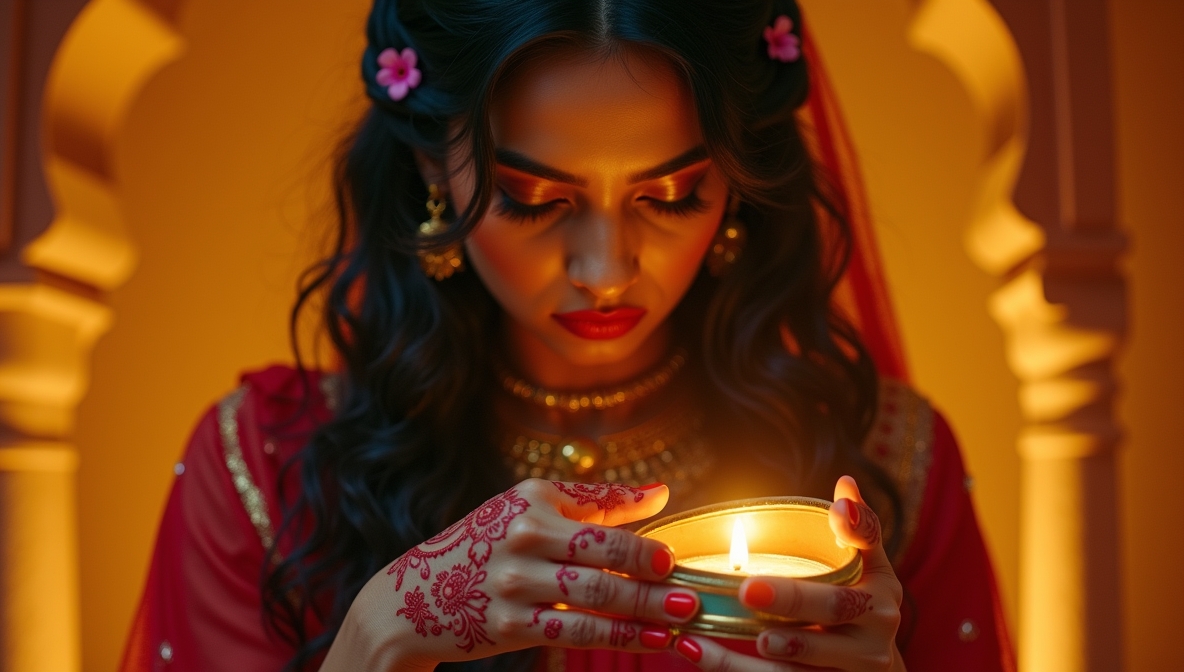Henna is more than decoration on the skin—it carries history, tradition, and deep-rooted symbolism across cultures. This natural dye, derived from the leaves of the Lawsonia inermis plant, has been used for centuries to mark celebrations, rituals, and rites of passage. Its intricate patterns and meanings differ from one region to another, yet the essence remains the same—a form of artistic expression that connects people to heritage, identity, and moments of joy.
Origins and History of Henna
Henna’s story traces back over 5,000 years, spanning Africa, the Middle East, South Asia, and parts of Europe. Archaeological evidence suggests its use in ancient Egypt, where it adorned mummies and pharaohs, symbolizing protection and the afterlife. Over time, its application spread through trade routes, influencing diverse cultural traditions.
Henna Across Civilizations
- Ancient Egypt: Used for body art and nail staining; Queen Cleopatra is believed to have applied it for beauty.
- India: Integral to weddings and festivals, with elaborate patterns symbolizing joy and prosperity.
- Middle East: Associated with blessings and protection, often worn by brides and newborns.
- North Africa: Applied for spiritual and healing purposes, sometimes incorporated into medicinal treatments.
- Europe: Introduced through Moorish influence in Spain, later gaining popularity in bohemian art circles.
Symbolism and Meaning in Different Cultures
Henna is not just ornamental; its designs hold deeper significance based on cultural beliefs, traditions, and events.
Wedding Rituals
In many cultures, henna is synonymous with weddings. The Mehndi ceremony in Indian and Pakistani traditions celebrates the bride’s transition into married life. The depth of the stain is often associated with love and prosperity, with folklore suggesting that darker henna signifies a stronger bond between spouses.
Religious and Spiritual Significance
- In Islamic traditions, henna is applied during Eid celebrations and other significant religious events.
- In Hindu customs, it is linked to Lakshmi, the goddess of wealth and prosperity, often applied during Diwali.
- Moroccan beliefs associate henna with warding off evil spirits, sometimes used as protective amulets in symbolic patterns.
Healing and Medicinal Use
Beyond aesthetics, henna has therapeutic properties. It has been used to cool the body in desert regions, treat skin conditions, and even as an antifungal remedy in traditional medicine.
Henna Patterns and Their Interpretations
Each pattern carries meaning, with designs varying by region and purpose.
Common Henna Motifs
- Floral Designs: Represent joy, fertility, and new beginnings.
- Paisleys: Symbolize abundance and prosperity, common in South Asian and Persian henna art.
- Dots and Lines: Used in African henna, often reflecting tribal identity and protection symbols.
- Eye Motifs: Thought to ward off the evil eye, frequently seen in Middle Eastern and North African traditions.
- Peacocks: Signify beauty and grace, often included in bridal designs.
Henna Traditions Around the World
India and Pakistan
The Mehndi night is a pre-wedding celebration where the bride and female guests receive intricate henna. The groom’s initials are often hidden within the bride’s design, creating a playful tradition where he must find them.
Morocco
Henna is part of berber traditions, used to mark births, engagements, and protective rituals. Moroccan designs are typically geometric, focusing on symmetry and balance.
Sudan
Henna is applied in multiple layers for a deep stain, especially for brides, covering hands, feet, and sometimes extending to the legs.
The Arabian Peninsula
Gulf henna is known for floral, vine-like patterns, often covering the fingertips and extending towards the wrist, emphasizing elegance.
Modern Uses and Adaptations
While henna remains rooted in tradition, its appeal has expanded globally. Festivals, music events, and even fashion trends incorporate henna-inspired designs. Temporary tattoos using black henna and white henna have gained popularity, though caution is advised with chemical-laden variants.
Henna in Contemporary Fashion
- Bridal Henna: Now includes gold and glitter accents, adding a modern touch to traditional designs.
- Henna Crowns: Used by cancer patients as an empowering alternative to wigs, blending artistry with healing.
- Fusion Designs: Western interpretations mix traditional motifs with contemporary body art, seen in music festivals and runway trends.
Cultural Appreciation vs. Appropriation
With global popularity comes responsibility. Understanding henna’s cultural depth ensures respect for its origins. Cultural appreciation involves acknowledging its history, significance, and meaning, while appropriation occurs when traditions are commercialized without recognizing their roots.
The Lasting Influence of Henna
Henna remains a living tradition, evolving while preserving its cultural essence. From ancient rituals to modern celebrations, its artistry continues to inspire, connect, and carry meaning across generations.


